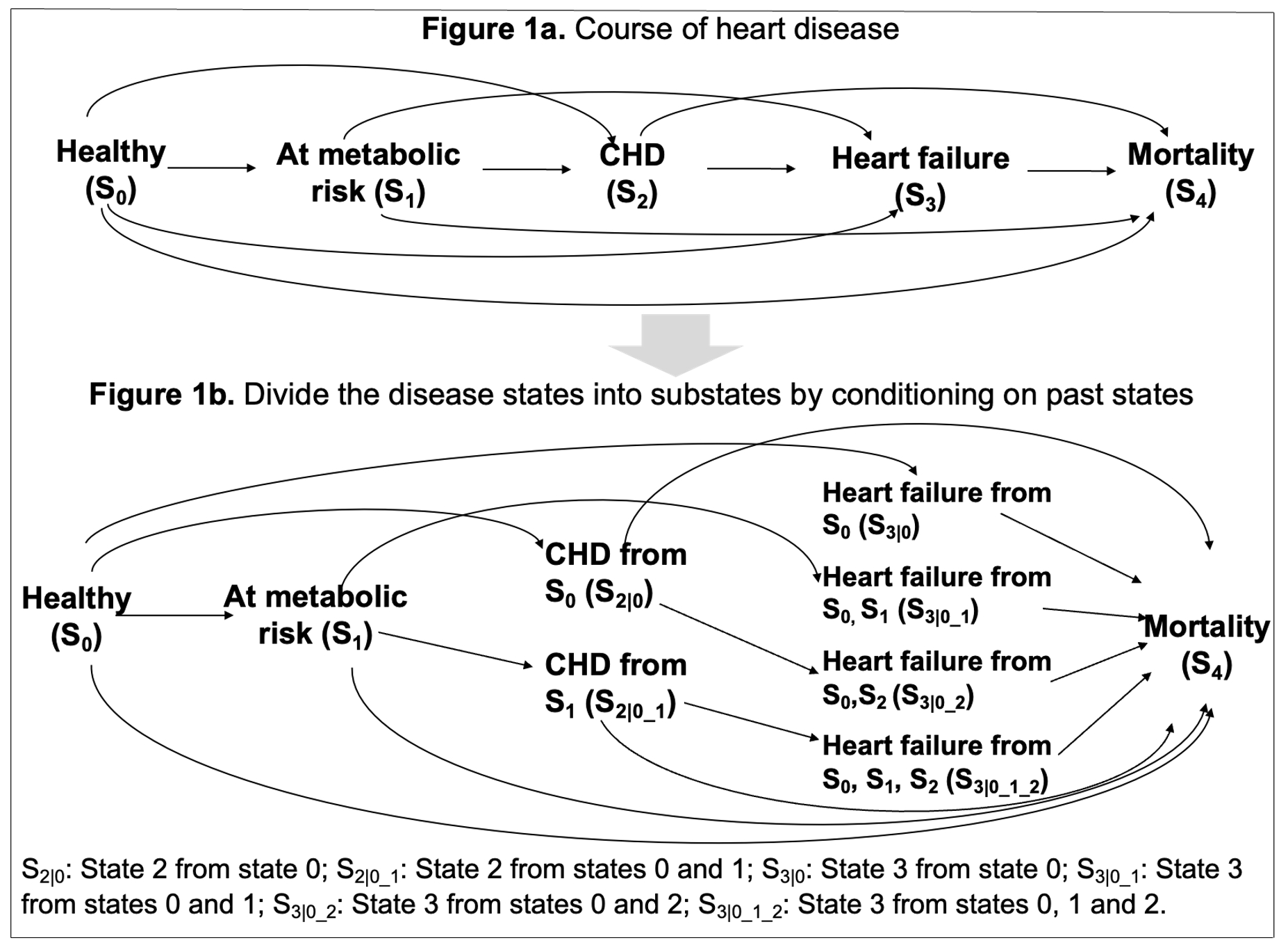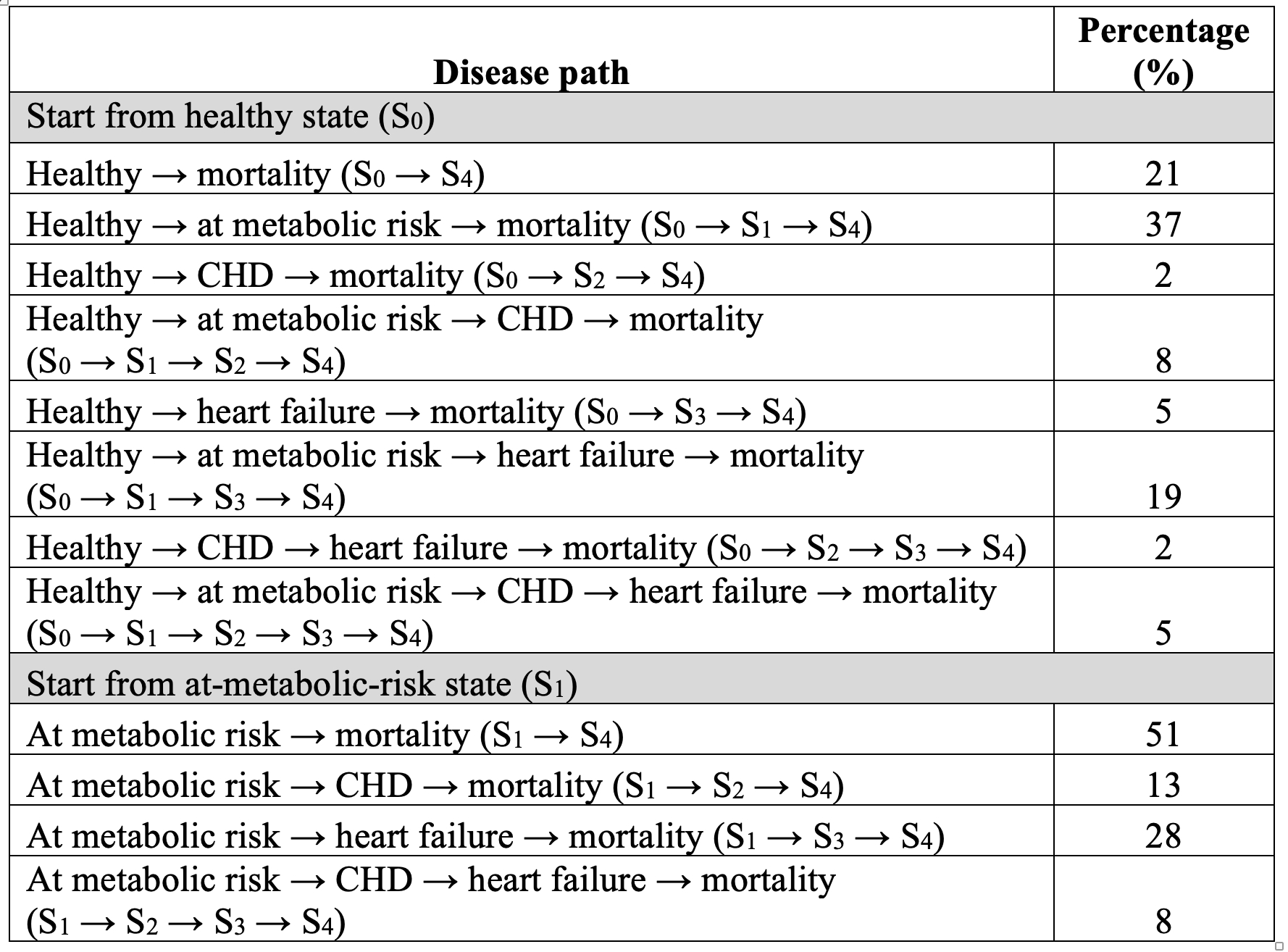Final ID: P1029
Projecting Disease Paths over the Course of Heart Disease: A Multi-state Non-Markov Framework
Abstract Body: Background. In existing literature, prevention and prediction of heart disease have largely focused on one endpoint. However, the development of heart disease is a multi-state process that is biologically inseparable. Only a few studies investigated the course of heart disease using multi-state Markov models, which are unsuitable to the course of heart disease due to several reasons. First, by assuming present state is independent of past history, Markov models do not allow for multimorbidity, a common condition for heart disease. Second, risk factors of heart disease interplay and affect future states, which violates the Markov assumption. Finally, the transition probabilities estimated from Markov modelsare time-specific, and these high-dimensional matrices are not straightforward for public health interpretation. Method. We have developed a multi-state non-Markov framework that splits disease state into substates by conditioning on past states (Ding et al. BMC Medical Research Methodology. 2024. In revision. doi: https://doi.org/10.1101/2024.09.18.24313882). As the substates track history of past states, transition rates between substates can be synthesized into one summary estimate, disease path. The derivation of the disease path can be found in our second paper (Ding et al. medRxiv. 2024. doi: https://doi.org/10.1101/2024.09.18.24313882). We applied our method to identify disease paths over the course of heart disease using the Atherosclerosis Risk in Communities Study (ARIC). We obtained the ARIC data from NHLBI BioLINCC. Results. We modeled the course of heart disease in five states: healthy, at metabolic risk, coronary heart disease (CHD), heart failure, and mortality (Figure 1a). By applying our framework, the disease states were divided into substates by conditioning on past disease history (Figure 1b), where transition rates between substates were estimated and used to project disease paths in the whole population. In this mid- to old-age population, the most likely disease path was “Healthy → at metabolic risk → mortality” (37%) for healthy participants at baseline, and the most likely disease path was “At metabolic risk → mortality” (51%) for at-metabolic-risk participants at baseline (Figure 2). The distribution of disease path was similar across sex and race subgroups. Impact. The path of heart disease characterizes the disease course in a summary manner and may elucidate pathophysiology of heart disease at the population level.
More abstracts on this topic:
Burden of Stroke Attributable to Air Pollution in India and its Trend from 1990-2021: A cross State Comparative Assessment
Surana Deval, Patel Juhi, Desai Hardik, Adrejiya Parth, Singh Kushagrita, Malhans Jeevanjyot, Vala Janmay, Goel Shrey, Syed Saif, Lakkimsetti Mohit, Amin Vishrant
A Nationwide Italian Network for the Clinical and Genetic Diagnosis of Familial Dyslipidemias: The LIPIGEN registryCasula Manuela, Galimberti Federica, Olmastroni Elena, Arca Marcello, Averna Maurizio, Catapano Alberico


